Blog 5
6th – 9th April
Turkistan to Kyzylorda
Distance: 323km
Total Distance: 1199km
Day 14 (6th April) – 119km
In Turkistan, our guide Islam was afflicted with a health issue and after much discussion with his family and the team, sadly he decided to return to his home city of Shymkent to get some treatment and rest. This means Sasha, our Russian-speaking support driver, will solely take on the support role. Thank goodness for Google Translate! Sasha is reliable and very competent and we are very fortunate to have him as a part of the team – we’re all patiently working on our communications.
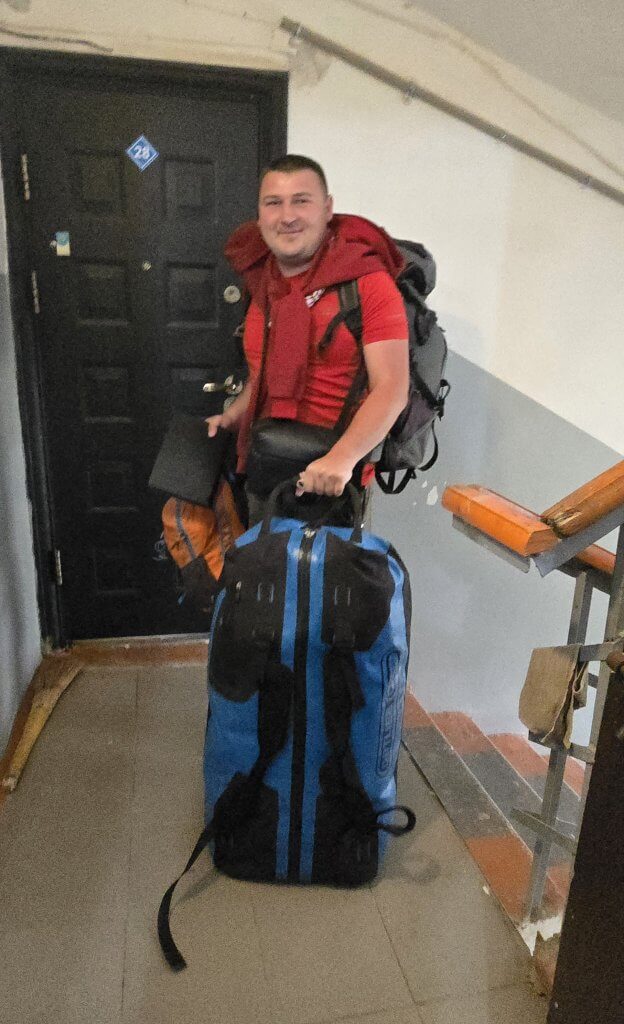
We set off from Turkistan, and to my delight, I pedalled along the busy highway with the wind at my back. Islam had decided to accompany us as far as Sauran, another very interesting archaeological site 50km from Turkistan, and then head back to Shymkent from there.
Sauran was an ancient city that once belonged to the Karakhanid Kharnate, a Turkic Islamic state that existed from the 9th to the13th centuries. The city was an important centre for trade and culture along the northern branch of the Silk Route. An underground aqueduct was engineered to deliver water from the Black Mountains 40km away to Sauran. After Sauran was raised by Ghengis Khan, the city was revived and existed from 13th – 18th centuries. It was the ruins of Sauran 2.0 that we investigated.
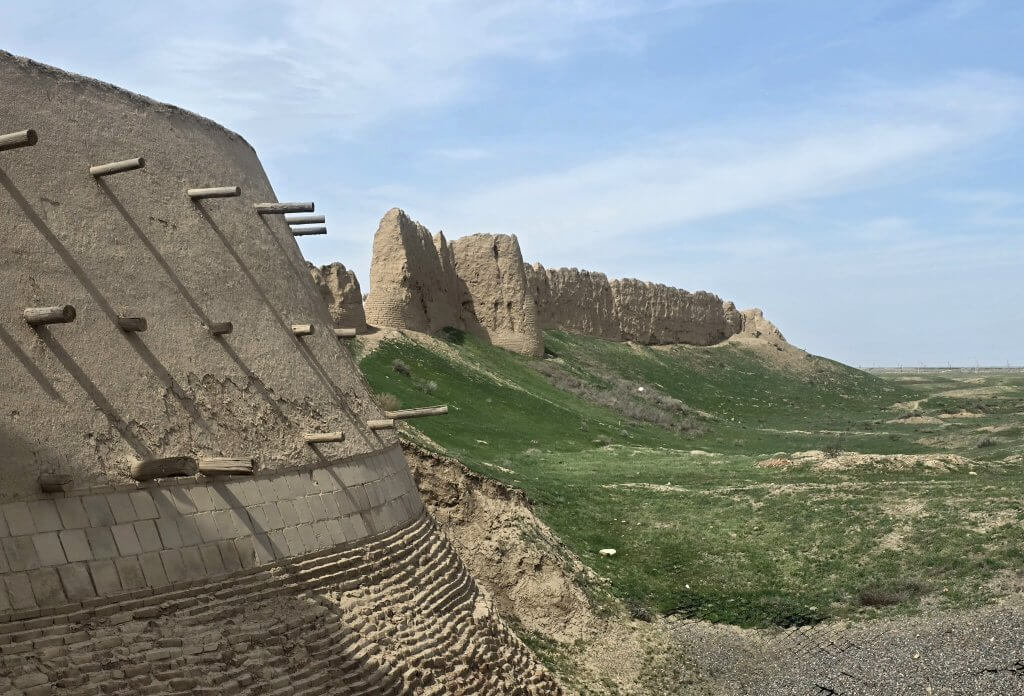
I liked the site, particularly as it hadn’t been rebuilt, apart from the entrance. Its walls are 2.3km in circumference, but now appear to be melting into the landscape, slowly returning to dust. Sauran was home to about 15,000 middle class citizens whereas the elite lived outside the city walls.

Slaves were forced to carry bricks baked in Sauran to build a part of the Mausoleum of Khawaja Ahmed Yasawi in Turkistan!
We said our goodbyes to Islam, who has been helping from afar ever since. I covered another 70km that day, the last hour in drizzly rain, to Zhanakorgan on the Syr Darya.
Day 15 (7th April) – 97km
Day 15 was a hard slog. The highway I’m following, the only direct route, is the main thoroughfare across Kazakhstan and into Central Asia – it is unbelievably busy with a constant flow of trucks and cars. It has a wide single lane in each direction and a small hard shoulder for me to stick to. The tail wind from the previous day became a powerful, gusting side wind and I fought to stay on the road and away from the wheels of heavy duty vehicles. I was pushed down to 13km/hr – it was painfully slow and I had to keep my wits about me. In the end I still made 97km and, unable to camp beside the river, Sasha found a small lake where, with permission, we could set up camp.
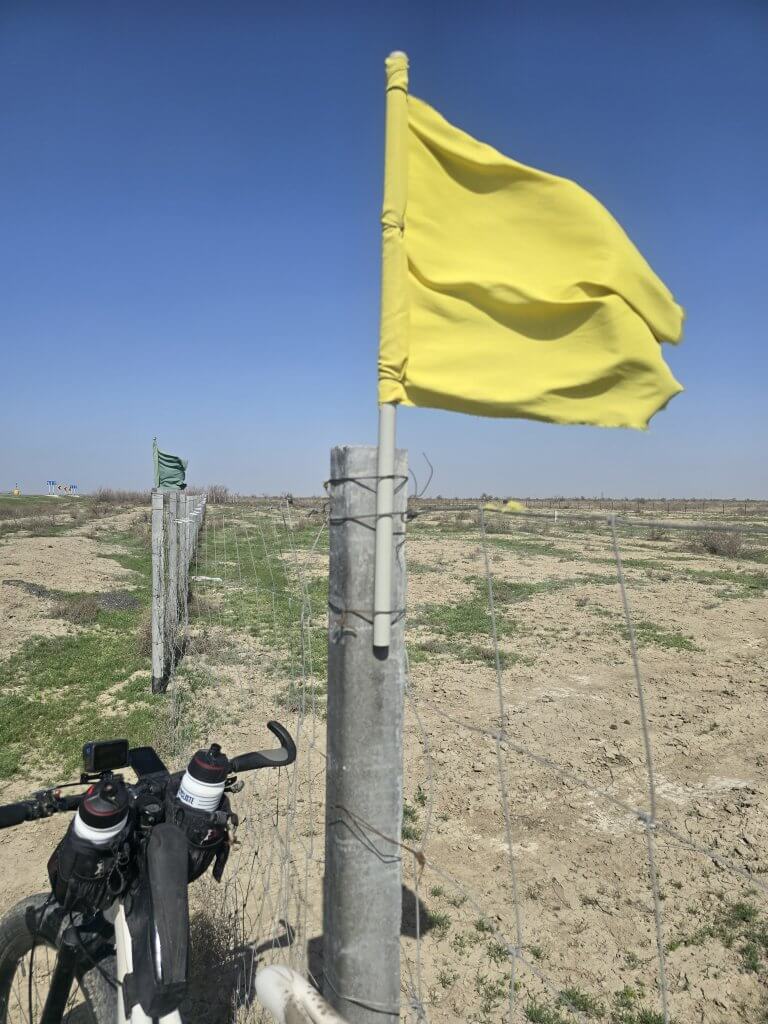
Day 16 (8th April) – 107km
On the last day into Kyzylorda, the wind eased but was this time a headwind. I opted to leave the busy highway for the south side of the Syr Darya. It was so much better cycling on quieter roads. The landscape became very dry, quite featureless and it was a long way between villages.
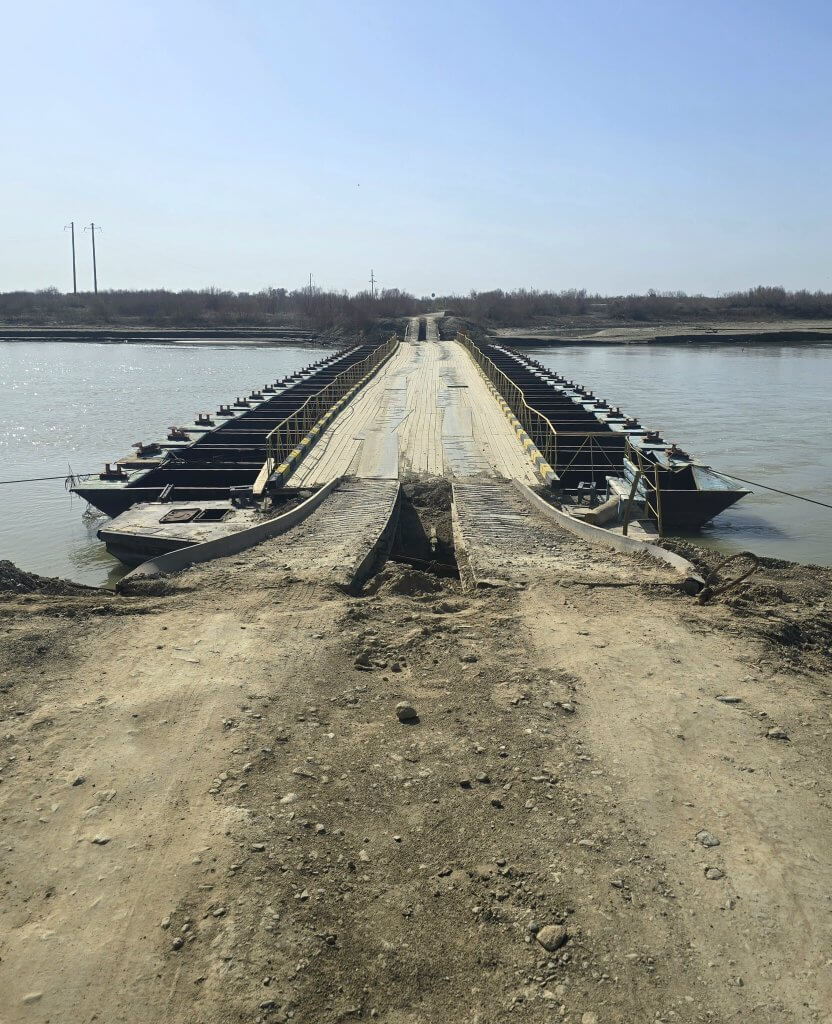
On reaching Kyzylorda, I merged into a maze of heavy traffic and struggled to keep Sasha’s vehicle in my sights. The city developed in the Soviet era to become the administration centre for the region, including the Aral Sea in Kazakhstan. We stayed in a 4th floor apartment – typical Soviet architecture with wonky stairs (no lift), dim lighting, everything a bit run down and not quite straight, but functional.
Day 17 (April 9th)
The International Fund for Saving the Aral Sea (IFAS) was established in 1993 by the Heads of State of Central Asia in order to overcome the environmental crisis and improve the socio-economic situation in the Aral Sea basin. I had connected with the IFAS Deputy Director before the expedition and he has coordinated his team to support my requests.
The aim in Kyzylorda was to see the Hydro-Complex, a feat of engineering that enables the Syr Darya’s flow to be efficiently managed so that only the amount required for rice production is diverted into the canal system. (Note that rice is still a water-thirsty crop) Most of the water keeps flowing towards the Aral Sea.
At the Hydro-Complex we were met by Erkin Utegenov, the Director for the IFAS in the Kyzylorda Region, Marat the Director of the Hydro-Complex and Azamat, a student interpreter. The Hydro-Complex was built in 1939, but then ceased working during the Second World War. After WW11, the Hydro-Complex was in disrepair until the Soviets used Japanese Prisoners of War to rebuild it.
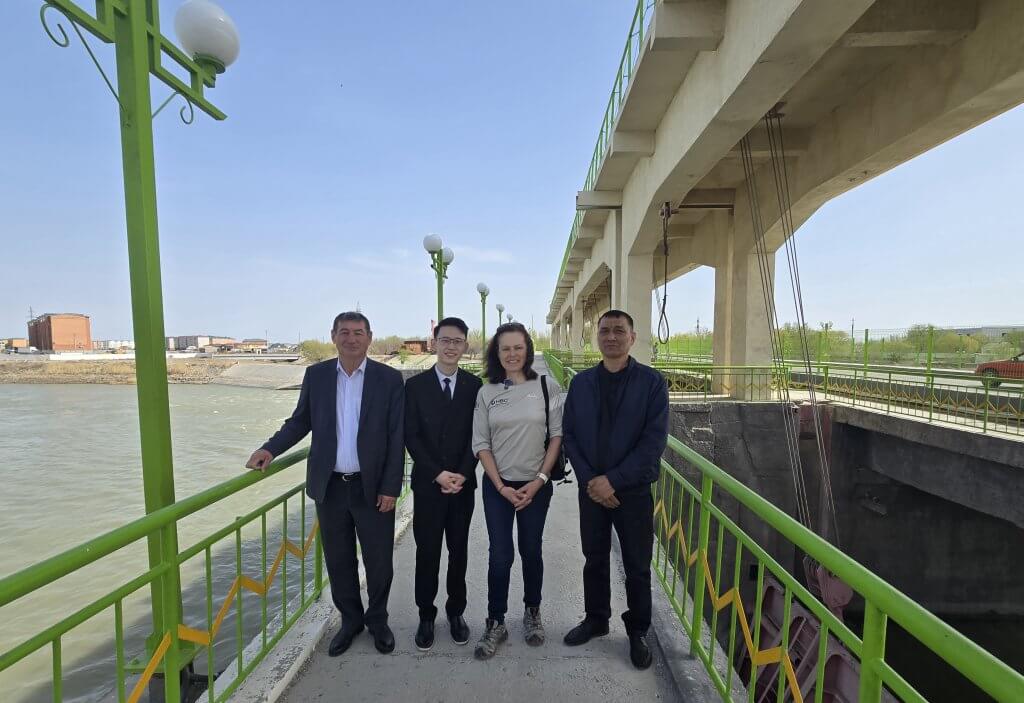
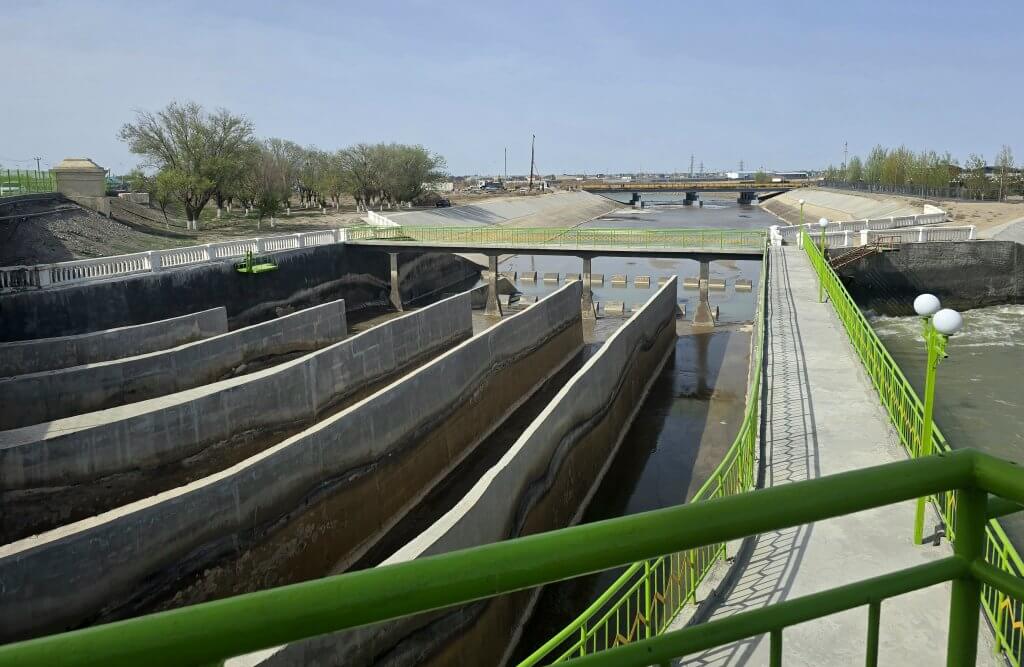
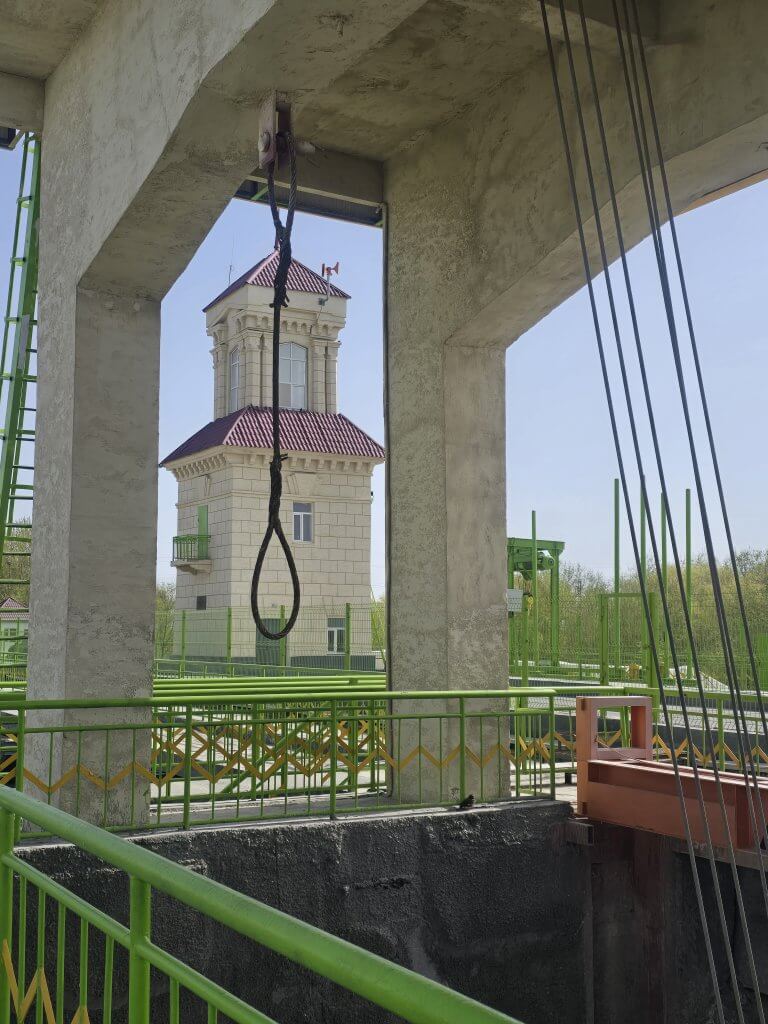
Next we were shown the museum which lay out its history; the construction from 1939 using peasant labour, the Soviet vision to use the Syr Darya’s water for maximum production at the expense of the Aral Sea, and why the updated Hydro-Complex it is now an important structure to help protect the Aral Sea.
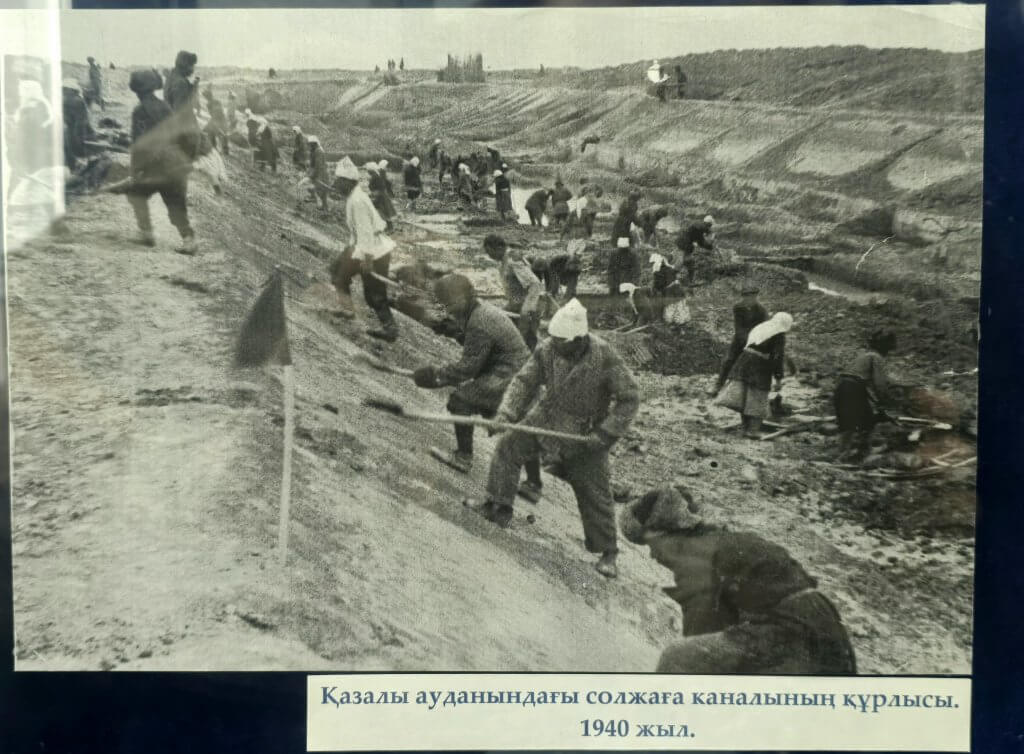
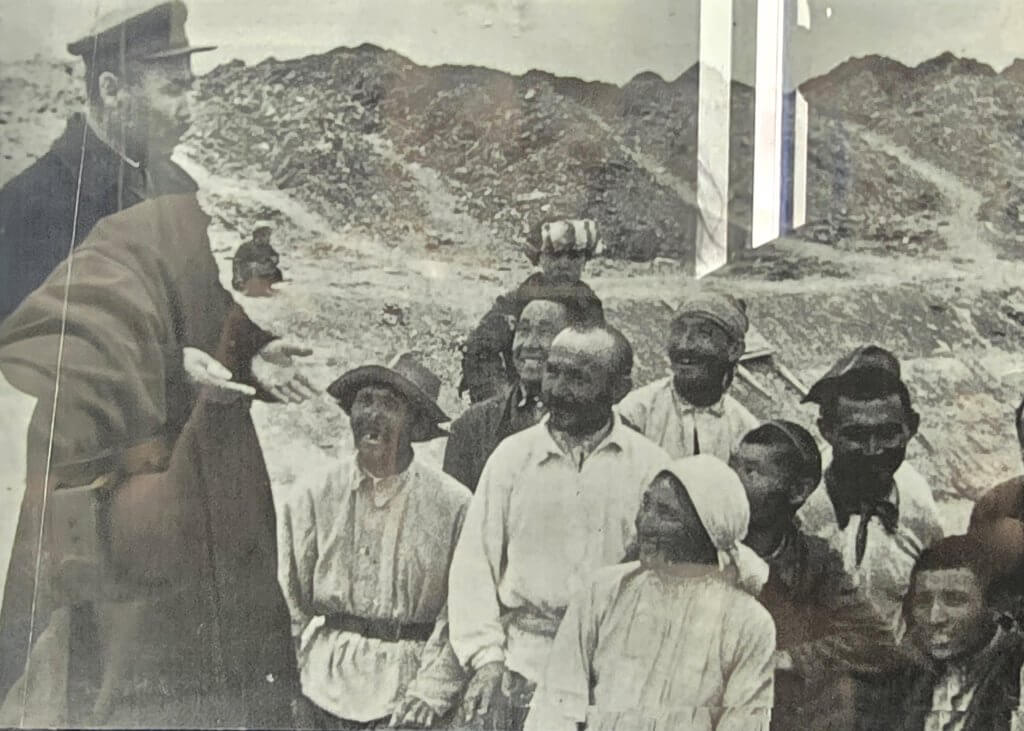
After the tour we were taken to Korkyt Ata University, a teaching university where we met Prof. Rakhat Kurmanbayev whose students were studying a course in water management and the protection of the Aral Sea. It was really impressive to see a group of bright young students taking their own future into their hands by learning how to manage and care for their environment. These are the kind of stories we don’t usually get to hear.
Korkyt Ata University is looking to collaborate with other universities around the world.
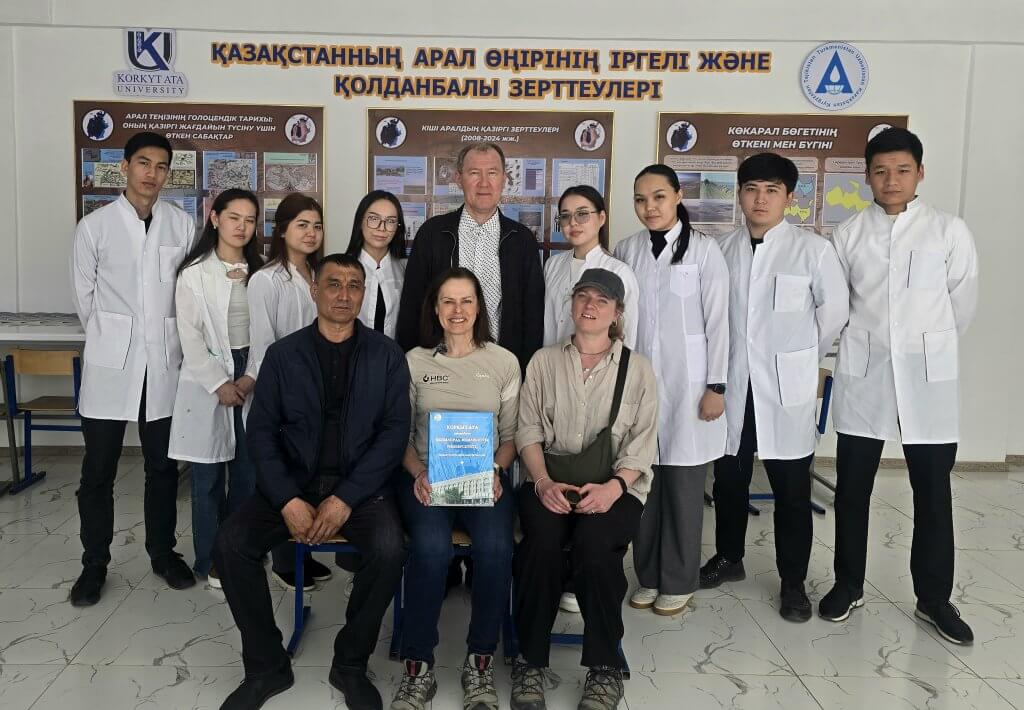

FOLLOW THE JOURNEY
Thanks to ZeroeSixZero, you can open this URL on your phone and select “add to home screen” and the map will become and app. You can then keep updated in real time: https://z6z.co/breakingthecycle/central-asia
TAKE ACTION
Support my Water.org fundraiser to help bring safe drinking water and sanitation to the world: Just $5 (USD) provides someone with safe drinking water or access to sanitation, and every $5 donated to my fundraiser will enter the donor into the Breaking the Cycle Prize Draw. https://give.water.org/f/breakingthecycle/#
EDUCATION
An education programme in partnership with Exploring by the Seat of Your Pants, with contributions from The Royal Geographical Society and The Duke of Edinburgh’s International Award Australia. We have created a Story Map resource to anchor the programme where presentations and updates will be added as we go.









When we are expecting tales of easy riding through open Kazakh steppes in springtime, we are brought back to the reality of heavy goods traffic on awkward roads in cross winds….and roads that are not accommodating to lone cyclists.
This journey is already a feat of organisation in uncertain conditions. Congratulations to you for your planning skills and for the endeavour that inspires them.
Thanks for this blog and all I am learning from it.
This trip is fascinating Kate.
How insular many of our lives are. Huge credit to you and your team for widening our horizons to other peoples lives, their history, and their hopes and plans for the good of their own communities and international consequences.
Stay safe. Lindsey.